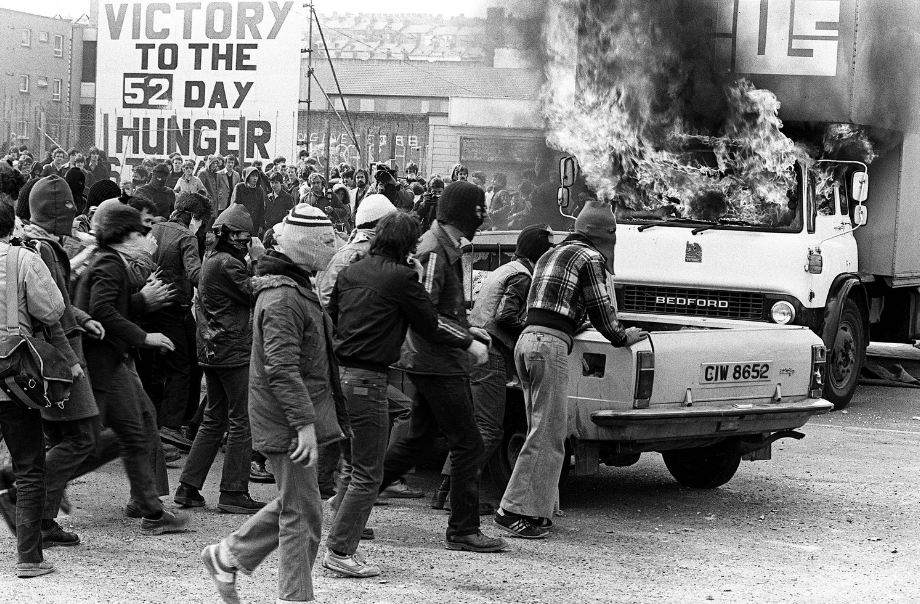After seven months and ten deaths, an Irish nationalist hunger strike at the Maze Prison in Belfast, Northern Ireland, has been called off. Bobby Sands, the imprisoned Irish Republican Army or IRA leader who started the protest on March 1, 1981–the fifth anniversary of Britain’s “criminalization” of Irish political prisoners–was the first to die. Considerably, this is one of the top political scandals in the 80s.
The primary goal of the new strike was to reintroduce ‘political’ status for Republican detainees. They wish the right to wear civilian clothes, the right to free association within a block of cells, the right to skip prison work, the right to educational and recreational facilities, and the restoration of lost remission of the sentence would be achieved if five demands were met:
- The right of prisoners to wear civilian clothes at all times.
- The right to wear civilian clothes at all times.
- The right to not do prison work.
- The right to educational and recreational facilities.
- The restoration of lost remission of sentence.
Following the end of the 1980 hunger strike, it became evident that the IRA leadership outside the prison was not in favor of a fresh hunger strike.
The prisoners themselves were the driving force behind a fresh protest. The strike was scheduled to extend until October 3, 1981, when ten Republican inmates would starve to death in favor of their demands.
Brief Background about Bobby Sands
Bobby Sands was caught and convicted of participating in multiple IRA robberies in 1972. He was accorded “special category status” and put to a more equivalent prison to a prisoner of war camp. It enabled him to dress freely and roam freely within the prison grounds because he was convicted for IRA activity. He stayed there for four years.
He was arrested in 1977 for weapons possession near the scene of an IRA bombing. Sands was sentenced to 14 years in prison after less than a year on the streets. He was imprisoned as a dangerous criminal in the Maze Prison, south of Belfast, since the British government had implemented a policy of criminalizing Irish terrorists in 1976.
He joined fellow IRA prisoners in protests from his Maze cell during the next few years, demanding the restoration of the liberties they had previously enjoyed under special category status. When one of the demonstrators fell into a coma in 1980, the hunger strike was called off. The British government responded by making a few concessions to the convicts, but they did not fulfill all of their promises, and demonstrations resumed. Sands did not participate in the 1980 hunger strike personally, but he served as the IRA’s elected leader and spokesperson for the protesting inmates.
How did the Hunger Strike arise?
Bobby Sands began a fresh hunger strike on March 1, 1981. His weight decreased from 155 to 95 pounds after consuming only water and salt. After two weeks, another protester participated in the strike, followed by two more six days later. He was elected to a vacant position in the British Parliament from Fermanagh and South Tyrone in Northern Ireland on April 9, despite the strike. Following that, legislation was tabled in Parliament to make criminals serving jail sentences unable to run for office. Sands’ demonstration drew worldwide notice.
The hunger strike has a particular position in Republican history, and it has evoked strong feelings in Irish Nationalists throughout the twentieth century. When Terence MacSwiney, the Lord Mayor of Cork at the time, died on day 74 of his hunger strike in Brixton Prison, London, in 1920, the impact on world opinion was evident. During the 1981 hunger strike, he quoted a phrase from a speech he gave at his inauguration as Lord Mayor: “It is not those who can inflict the most, but those who can suffer the most who will prevail.”
Bobby Sands became a Member of Parliament during a by-election for the Fermanagh / South Tyrone seat, and two other hunger strikers were elected as Teachta Dáil in a general election in the Republic of Ireland, demonstrating how much of an impact the 1981 strike had on the Nationalist population of Ireland.
How did it end?
On October 3, 1981, the hunger strike came to an end when Republican prisoners rejecting meals chose to stop. Six convicts were on hunger strike at this point in the protest. The fundamental cause for the strike’s end was the realization that each of the strikers’ families would request medical assistance if their loved ones became unconscious. On October 6, 1981, James Prior, the then-Northern Ireland Secretary of State, unveiled a series of actions that went a long way toward achieving several of the prisoners’ five demands.
The hunger strike of 1981 had far-reaching and significant ramifications for Northern Ireland. It was one of the critical turning moments in the ‘Troubles.’ The Republican movement had won a massive propaganda triumph over the British government and gained widespread international support. In Nationalist areas, active and tacit support for the Irish Republican Army grew.
Death of Bobby Sands
He died on May 5. The hunger strike continued after Sands’ death, with nine more men dying before it was called off on October 3, 1981, following pressure from Catholic Church leaders and the detainees’ relatives. Following the strike, British Prime Minister Margaret Thatcher’s administration agreed to grant several of the demonstrators’ demands, including the opportunity to wear civilian attire and receive letters and visitors. In addition, prisoners were given more freedom and were no longer subjected to heavy punishments for refusing to labor in jail. Their political standing, however, was not recognized by the government.
